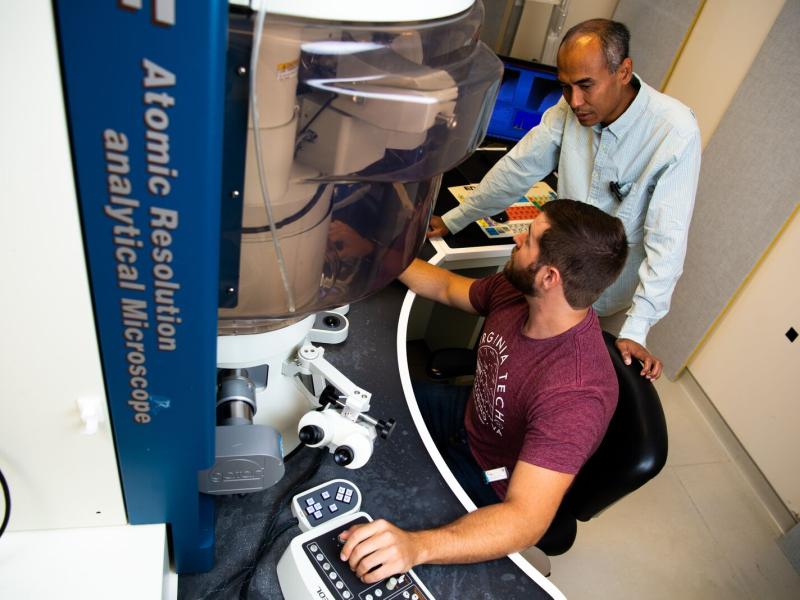Solid Phase
Processing
Solid Phase
Processing
Revolutionizing metal and
multi-material products
Revolutionizing metal and
multi-material products
Friction stir wielding machine
Building on a rich history of materials science research and engineering development, Pacific Northwest National Laboratory (PNNL) is paving the way for adoption of new manufacturing methods that could revolutionize the energy, automotive, aerospace, and other industries. Solid phase processing (SPP) has the potential to significantly decrease the energy used in manufacturing and deliver higher-performing components—all at a lower cost.
This scalable approach produces metal and composite products that, in some cases, simply cannot be made by conventional means.
No melting required
Historically, metal alloy and composite production has required that the metal first be melted and then subjected to several energy intensive steps, such as heat treatment, forging, rolling, and drawing, to produce end products. With SPP, metals are not melted, resulting in a significant decrease in the energy intensity of alloy and component manufacture.
SPP applies mechanical energy—in the form of high shear strain—to the metals to create friction heat for deformation. This process enables the microstructure of the metal to be tailored to yield superior properties.
As a result, SPP can circumvent the constraints imposed by conventional manufacturing methods and produce materials and components with truly extraordinary properties.
PNNL’s award-winning SPP methods can create entirely new alloys and composites, enable production of difficult-to-fabricate products, join dissimilar materials, repair damage in components, or create protective coatings.
Energy savings and agile manufacturing
These patented technologies have the potential to provide more efficient and scalable manufacturing approaches that will allow a variety of industries to incorporate higher-performance materials into their products.
PNNL’s specialized friction stir methods can join similar and dissimilar materials to produce high-performance joins, while using up to 80 percent less energy than traditional welds. In addition to traditional friction stir welding approaches, PNNL has developed several friction-assisted welding techniques and specialized tools to join materials with different melting points and to form metallurgical bonds for stronger joints.

PNNL’s patented and patent-pending Shear Assisted Processing and Extrusion (ShAPE™) processes and tooling provide a pathway to entirely new alloys and composites, including wires, tubular, non-circular and multi-cell profiles products. Using PNNL’s first-of-its-kind ShAPE machine, copper wire can be extruded with higher conductivity; thermoelectric materials can be made with higher efficiency; aluminum alloys can be extruded faster with less energy; and metal scrap can be recycled directly into products with better performance than the original material. SPP provides more products in less time with less effort. These methods, systems, and tools are scalable, affordable, environmentally friendly solutions to a wide range of technology challenges for the energy, transportation, national security and health sectors.
A third SPP technique, called cold spray, can repair or refurbish worn or failing metal parts—in hydropower or nuclear power plants, for example. Cold spray deposits, at supersonic speeds, coatings that add functionality to materials and/or protect them from harsh service environments.

Solutions for industry
SPP provides more products in less time with less effort. These methods are scalable, affordable, environmentally friendly solutions to a wide range of technology challenges for the energy, transportation, national security, and health sectors.
These technologies are available for licensing. Industry and university researchers are encouraged to collaborate with PNNL on SPP technologies for specific applications and to further demonstrate them in a variety of industrial settings.





